Army Nursing in World War II – Nursing Practice
 During World War II, members of the US Army Nurse Corps took care of the sick and wounded throughout the world, often in dangerous and difficult conditions. These brave women inspired four of my novels (A Memory Between Us and the Wings of the Nightingale series), so I’m sharing a four-part series on US Army nursing during the war.
During World War II, members of the US Army Nurse Corps took care of the sick and wounded throughout the world, often in dangerous and difficult conditions. These brave women inspired four of my novels (A Memory Between Us and the Wings of the Nightingale series), so I’m sharing a four-part series on US Army nursing during the war.
Part 1: Who Could Serve in the US Army Nurse Corps
Part 2: Recruitment, Training, and Military Rank
Part 3: Uniforms
Part 4: General Nursing Practice
US Army Nurse Corps in World War II – General Nursing PracticeWard ManagementOn the hospital ward, the nurse was in charge, under the authority of the physician. She was assisted by male medics, who were enlisted men. In stateside hospitals, female Red Cross nurses’ aides also served.
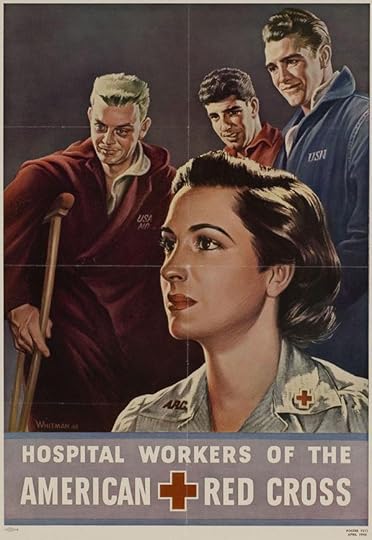
Poster for American Red Cross Hospital Workers, April 1943
Physicians entered the Medical Corps with the rank of captain and only male physicians were admitted to the Corps. As was typical in the 1940s, physicians expected unquestioning, speedy obedience from nurses. However, the war shook things up. The necessities of combat meant nurses were often asked to perform new tasks and were given more authority, especially in combat zones. For the first time, nurses administered anesthesia and gave intravenous medications and fluids. Also, flight nurses were completely in charge during flight and had authorization to treat many medical emergencies.
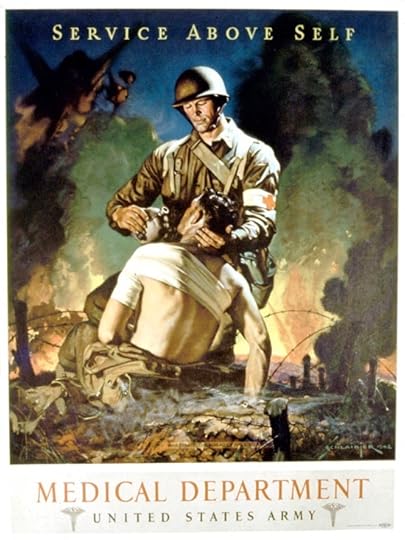
Poster for the US Army Medical Department, WWII
For more about medical air evacuation and flight nurses, please see my blog series:
Medical Air Evacuation in World War II
Medical Air Evacuation in World War II–One Patient’s Journey
Medical Air Evacuation in World War II–The Flight Nurse
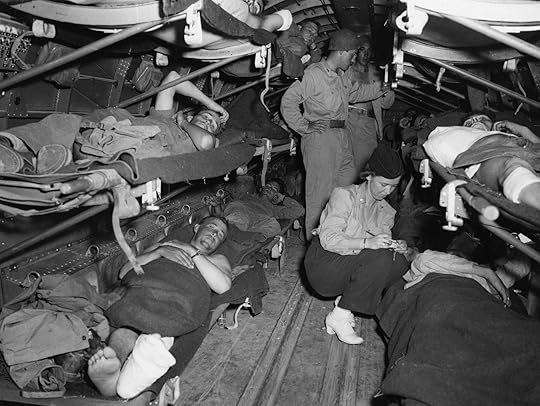
Lt. Katye Swope of the 802nd Medical Air Evacuation Transport Squadron checks patients being evacuated from Agrigento, Sicily to North Africa for further medical treatment, 25 July 1943 (US Air Force photo 25749AC)
Nursing DutiesThe nurse was responsible for keeping the ward properly heated and ventilated, and for cleanliness, orderliness, and quiet—often difficult in combat theaters. She and the medics changed linens and helped the patients bathe, shave, brush teeth, change clothes, and use the bedpan or urinal. They served food and helped the sicker patients eat. Alcohol rubs were given to relax patients and prevent bed sores.
Nurses took careful notes, stored by the bedside, to monitor patient health. TPRs (Temperature, Pulse, and Respiration) were recorded at regular intervals, at least twice daily. A glass mercury oral thermometer was used. Blood pressure was measured in certain patients as well.
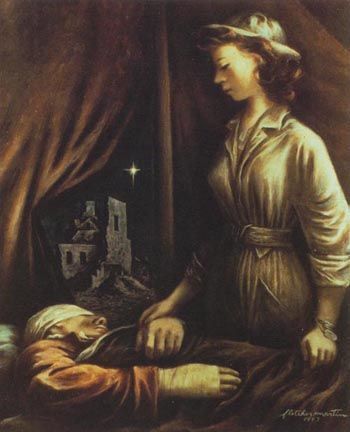
“GI Angel” by Fletcher Martin, depicting an Army nurse in North Africa, 1943 (US Army Medical Department, Office of Medical History)
Physicians relied on the nurse’s assessment of patient symptoms—signs of bleeding or infection, weakness, restlessness, anxiety, coloring, mental condition, speech, condition of the eyes and tongue, appetite, bowel and urinary functions, coughing, and pain.
Nurses were vital members of the operating room team, and in combat theaters, they often learned to administer anesthesia, close wounds, and perform other tasks.
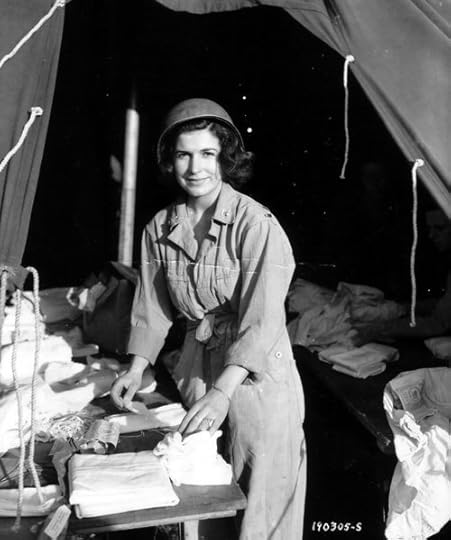
US Army nurse preparing dressings, 15 June 1944, 13th Field Hospital, St.-Laurent-sur-Mer, Normandy (US National Archives: 190305-S)
Medication AdministrationMedications were stored in the ward in a locked cabinet. The nurse was responsible for the key, but medics were allowed to access and administer medications in most instances. Nurses were trained to give medicine by mouth, hypodermic (now called subcutaneous), intramuscular, topical (on the skin), and by enema. Intravenous medications were to be given only under the direct supervision of a physician; however, exceptions were made in the combat theaters and for flight nurses.
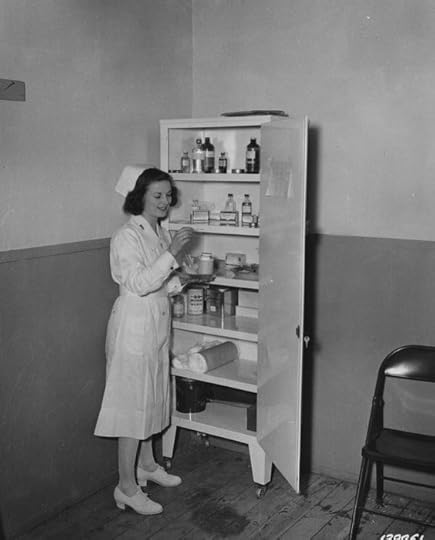
Army Nurse Betty Evans checks thermometers by the medication cabinet, 8 April 1942, Iceland (US Army Medical Department, Office of Medical History)
This was long before our disposable, single-use, “universal precautions” era. Syringes were made of glass and were sterilized in bichloride of mercury before reuse. Gloves were washed and reused—and holes were even patched.
Improvisation was the rule, especially in combat areas, and nurses used their creativity and imagination to turn trash into useful items.
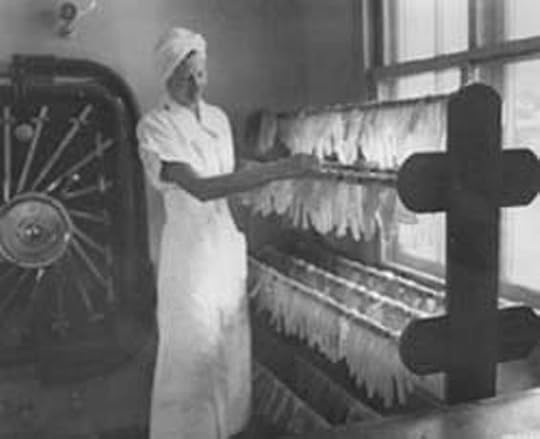
Army Nurse Bernice Simmet selects a pair of rubber gloves, Fort Benning GA, 20 July 1941 (US Army Medical Department, Office of Medical History)
Sources:Tomblin, Barbara Brooks. G.I. Nightingales: the Army Nurse Corps in World War II. Lexington: University Press of Kentucky, 1996. (A wonderful history, including all theaters, full of personal stories).
Technical Manual TM 8-220: Medical Department Soldier’s Handbook. Washington DC: War Department, 5 March 1941. (The official Army handbook used by medics, which contains a lot of information on nursing duties).
The post Army Nursing in World War II – Nursing Practice first appeared on Sarah Sundin.


